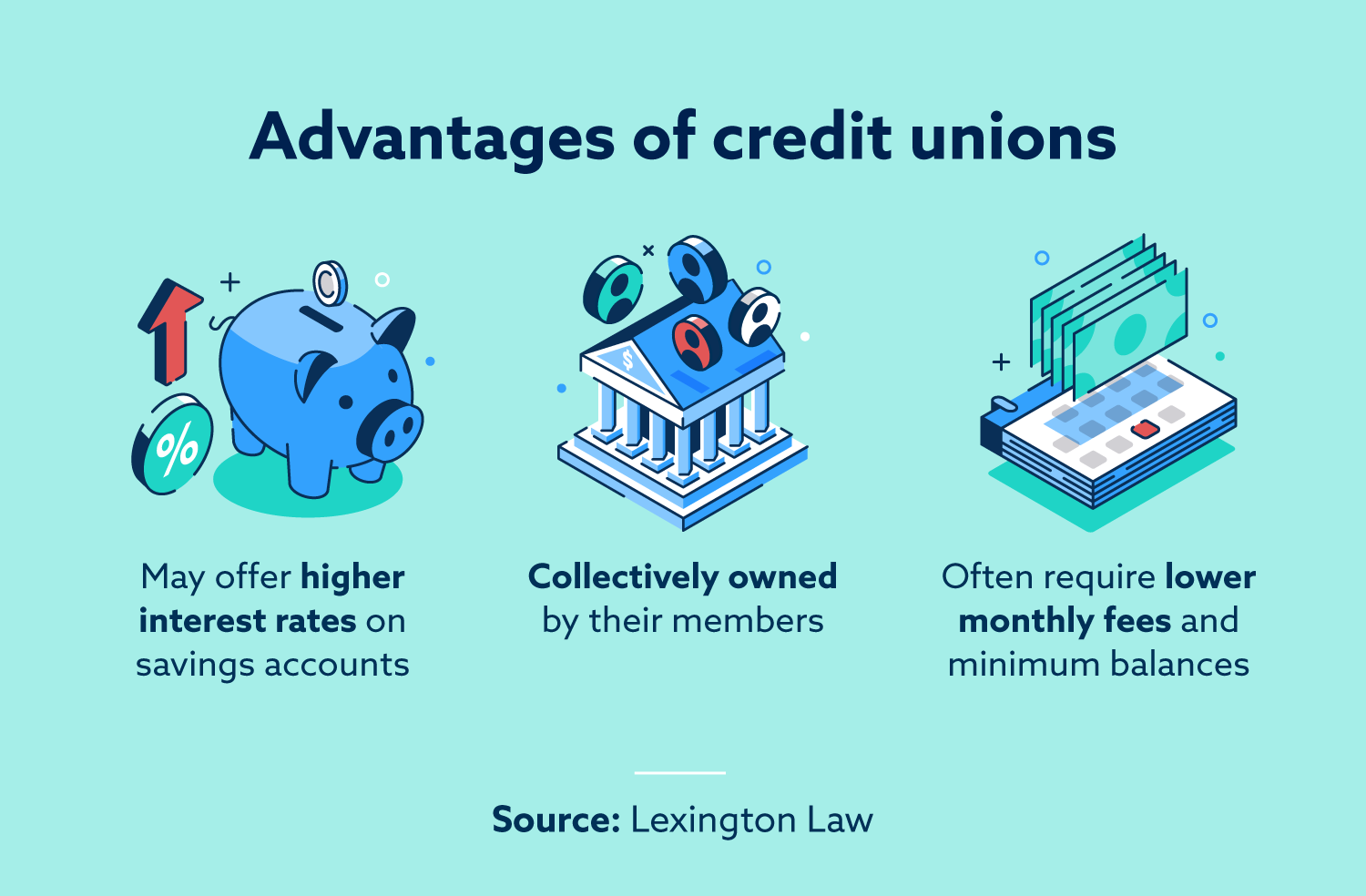Wyoming Credit Union: Trusted Financial Solutions for Every Demand
Wyoming Credit Union: Trusted Financial Solutions for Every Demand
Blog Article
The Ultimate Guide to Understanding Cooperative Credit Union

Cooperative credit union stand as distinct economic entities, rooted in principles of common support and member-driven procedures. Nevertheless, beyond their fundamental worths, comprehending the intricate operations of lending institution involves a much deeper exploration. Deciphering the intricacies of membership qualification, the development of solutions used, and the distinct advantages they bring calls for an extensive examination. As we browse via the details of lending institution, an insightful journey waits for to shed light on these member-focused establishments and just how they differ from standard financial institutions.
What Are Debt Unions?
Lending institution are member-owned monetary organizations that use a variety of financial solutions to their participants. Unlike standard financial institutions, lending institution run as not-for-profit organizations, implying their main focus gets on offering their members instead of making the most of earnings. Participants of a lending institution normally share a typical bond, such as helping the same company, coming from the exact same community, or being component of the very same organization.
One of the key benefits of lending institution is that they commonly provide greater rate of interest rates on financial savings accounts and lower rates of interest on finances contrasted to financial institutions. Credit Union in Wyoming. This is because cooperative credit union are structured to profit their participants directly, allowing them to pass on their incomes in the kind of better prices and less fees. Furthermore, lending institution are recognized for their personalized consumer service, as they prioritize building relationships with their members to understand their unique monetary requirements and goals
History and Evolution of Cooperative Credit Union
The roots of member-owned financial cooperatives, known today as credit scores unions, trace back to a time when neighborhoods sought alternatives to conventional banking organizations. The idea of cooperative credit union come from the 19th century in Europe, with Friedrich Wilhelm Raiffeisen frequently credited as the leader of the participating banking activity. Raiffeisen established the first identified credit union in Germany in the mid-1800s, stressing neighborhood assistance and self-help concepts.
The evolution of cooperative credit union continued in The United States and Canada, where Alphonse Desjardins established the initial lending institution in Canada in 1900. Soon after, in 1909, the first united state lending institution was formed in New Hampshire by a team of Franco-American immigrants. These early debt unions operated the basic principles of mutual help, democratic control, and participant ownership.
Over a fantastic read time, lending institution have expanded in popularity worldwide as a result of their not-for-profit structure, concentrate on serving participants, and offering affordable monetary products and solutions. Today, credit report unions play an important function in the economic industry, providing community-oriented and obtainable banking choices for businesses and individuals alike.

Subscription and Eligibility Standards
Membership at a credit rating union is commonly limited to people satisfying details eligibility requirements based upon the institution's starting concepts and regulatory demands. These standards frequently consist of variables such as geographic place, work standing, subscription in certain companies, or association with details groups. Cooperative credit union are understood for their community-oriented approach, which is reflected in their subscription requirements. Wyoming Credit Union. Some debt unions may only offer individuals who live or work in a particular location, while others might be customized to workers of a specific business or members of a particular organization.
Additionally, lending institution are structured as not-for-profit companies, suggesting that their key objective is to offer their participants as opposed to create profits for shareholders. This concentrate on member solution often converts right into more personalized interest, lower costs, and affordable rate of interest on finances and cost savings accounts. By satisfying the qualification criteria and coming to be a member of a credit score union, individuals can access a series of economic product or services customized to their particular demands.
Services and Products Used
One of the key facets that establishes credit rating unions apart is the diverse array of economic solutions and products they provide to their members. Credit report unions normally offer conventional financial solutions such as savings and checking accounts, loans, and credit cards.
In addition, lending institution usually supply convenient online and mobile financial options for participants to easily handle their financial resources. They might visite site use perks such as common branching, allowing participants to access their accounts at other cooperative credit union across the nation. Some credit scores unions also supply insurance coverage products like vehicle, life, and home insurance policy to help members shield their assets and liked ones.
Benefits of Banking With Cooperative Credit Union
When considering financial institutions, discovering the advantages of banking with credit rating unions discloses distinct benefits for participants seeking tailored service and competitive prices. Unlike large financial institutions, credit history unions are member-owned and prioritize structure strong relationships with their members. Overall, financial with a credit report union can offer an extra customized, cost-effective, and member-centric monetary experience.
Conclusion
In conclusion, debt unions stand out as member-owned economic establishments that prioritize serving their participants over taking full advantage of revenues. With origins dating back to 19th century Europe, debt unions follow principles of mutual support and member possession.
Credit rating unions are member-owned monetary organizations that supply an array of banking solutions to their members. The concept of debt unions come from in the 19th century in Europe, with Friedrich Wilhelm Raiffeisen usually attributed as the leader of the cooperative financial motion.The development of credit report unions continued in North America, where Alphonse Desjardins developed the initial credit report union in Canada in 1900. Credit score unions usually offer traditional financial services such as financial savings and Home Page inspecting accounts, car loans, and credit scores cards.When considering monetary institutions, exploring the advantages of banking with credit scores unions discloses one-of-a-kind advantages for participants seeking customized solution and competitive prices.
Report this page